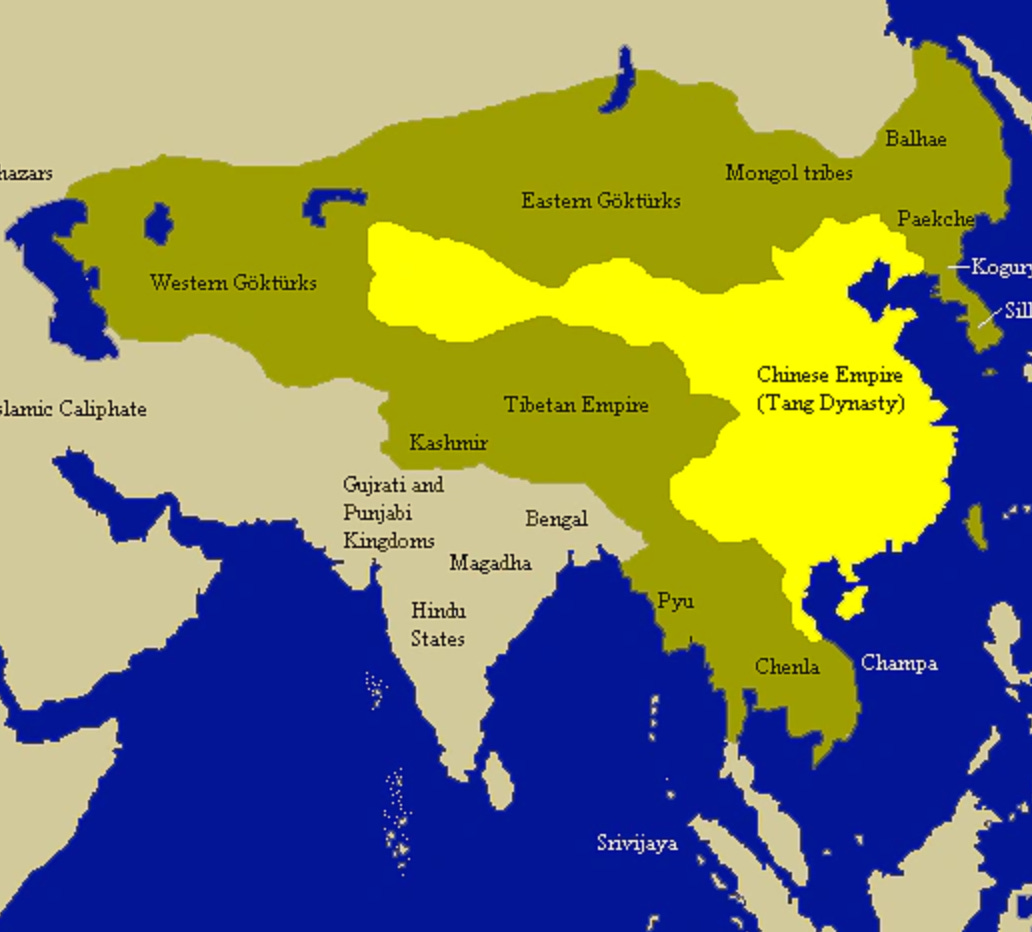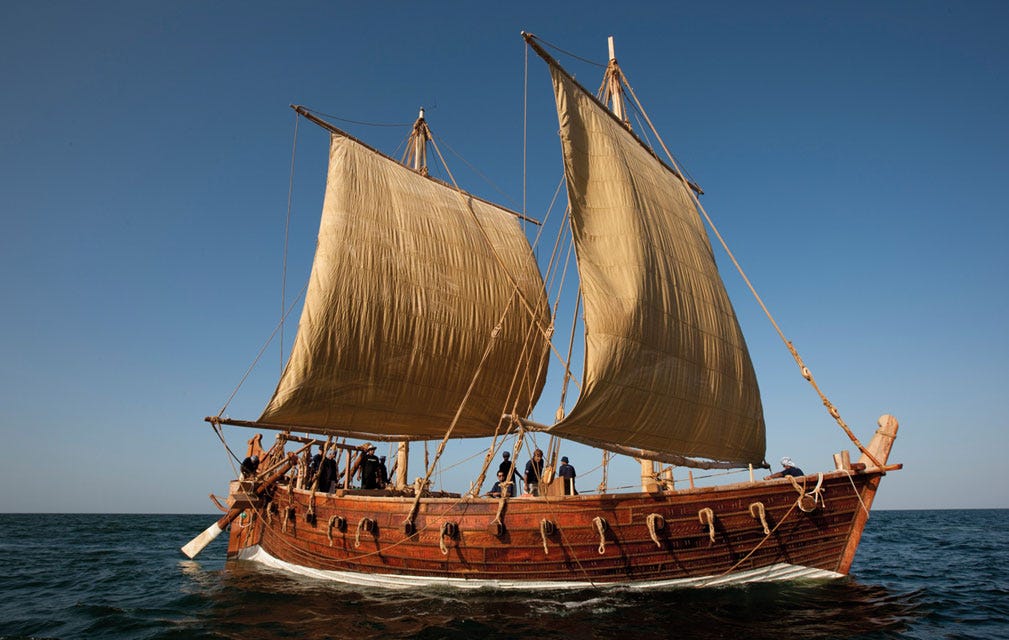Dear all
According to the official histories there were 13 dynasties that ruled China between the rise of the Xia in about 2070 BC, and the fall of the Last Emperor in 1912. Although this number is highly disputed - there were plenty more smaller dynasties - one thing that is less controversial is which of these dynasties was the greatest. Ask someone in China that question, and almost invariably they will tell you about the subject of today’s historical and cultural post: the Tang.
As always please remember to like, share, and subscribe. And comment!
Many thanks for reading.
***
In 1998, divers hunting for sea cucumbers off the jungle island of Belitung, halfway between Sumatra and Borneo, discovered the wreck of an Arab ship that sunk in about AD 830. Now housed in a Singaporean museum, the vessel was laden with wares from across China, including astonishing pieces of gold and silver, and over sixty thousand pieces of well-preserved ceramics. It is an extraordinary insight into not only the volume of exports that were making their way out of China at this time, but also the wealth and quality of workmanship that existed during the Tang Dynasty.
The Tang (AD 618-907) arose from the ashes of the previous dynasty, the Sui, which collapsed under the weight of an overly extravagant programme of public works that bled the coffers and inspired revolt. Amidst the murderous chaos that accompanied the fall of the Sui, a senior official called Li Yuan overcame his rivals to claim the throne, famously helped by his daughter. In a tale that is still told today, the Princess Pingyang sold off all her possessions and raised a 70,000 force called the Army of the Lady to support her father’s efforts.
The first emperor, Gaozu, lasted barely a decade before he in turn was overthrown, but not by a courtier or general. It was instead his own son, hot on the heels of murdering his two brothers, who forced him to abdicate.
In the same way that the Roman Empire considered Trajan (AD 98-117) to have been perhaps the greatest of its rulers – the Senate declared him “optimus princeps”, or “best ruler”- Gaozu’s son, Taizong, has been held up by subsequent Chinese leaders as marking a high tide in good stewardship. Taizong’s economic and political reforms meant that he and his heirs – which included the only woman to rule China in her own right, the Empress Wu - became, in the words of the historian John Keay, “masters of the most productive and effective empire in the world.” Rather aptly, Taizong’s name translates as “Supreme Ancestor”.

One of the most enduring highpoints of Tang rule was its encouragement of literature and the arts. This even extended into official guidance on how officials and civil servants should behave. A great emphasis was put on their refinement in appearance and speech, and a talent for calligraphy encouraged. Poetry was highly prized, and poets like Du Fu (known in the public’s memory as the “saint of poetry”) and Li Po (the “god of poetry”) were the celebrities of their time.* Tang poems remain popular today, so much so that Xi Jinping has quoted them in speeches for the masses.
Religions flourished in Tang China. Although Confucianism became even more important to the state in terms of its influence on matters like the law – punishments were greater if hierarchies were breached during the crime – other creeds and faiths took hold. Buddhism in particular thrived, and Buddhist monasteries became wealthy thanks to noble patronage and a handy exemption from taxes. Christianity and Islam were introduced too, and the AD 742 Great Mosque in the central city of Xian – at the end of the Silk Road, along which many Muslim Persians and Arabs traded – is still active today.
Technology advanced alongside culture. Gunpowder was first invented by an unknown alchemist, porcelain was perfected, and the chair introduced and popularised - up until now the Chinese had knelt on the floor. Irrigation advances like the “dragon backbone” – a pump that looked like a giant chain made up of square wooden pallets - boosted agriculture and helped the population expand.
Foreign trade was central to the bustling Tang economy. The development of a complex ship building industry helped to propel Chinese traders into South East Asia and beyond; it is at this time that we see the first contact with Africa, including the import of black slaves via Arab intermediaries. As the Belitung wreck shows, Arabs were actively trading with China by sea, and on land too.

The Silk Road was a crucial part of the Tang empire, but as well as bringing in immense riches, it was helped bring about the dynasty’s eventual collapse.
In an effort to dominate more of the Silk Road, the Tang armies pushed west to reclaim some of the land that the earlier Han had once controlled. This time the armies continued further on, pushing into Central Asia until they finally met Arab armies moving east, at the Battle of Talas in 751. Fought in what is now Kazakhstan, the Tang army was routed. Although mainly unknown today, Talas was, in hindsight, a critical event in Chinese history. First, it dictated that China would not be the dominant force in Central Asia and opened the door for largescale Muslim conversion. Second, the less direct, but important nonetheless, consequence of the Tang’s overstretch west was the An Lushan rebellion, one of the bloodiest conflicts in history.
Starting in 755, when the general An Lushan declared himself the emperor of northern China, the civil war lasted for eight years and resulted in the deaths of up to thirty six million people. To put this in perspective, Steven Pinker, the scientist and writer, interprets this as representing the deaths of two-thirds of the empire at the time – equivalent to one sixth of the world’s total population. As we have seen time and again in this series so far, China has a repetitive capacity for bloodiness on a truly global scale.
Upon An Lushan’s death – he had become blind, and so obese that he crushed a horse to death – the rebellion fizzled out, but the empire never recovered. It was the beginning of the end – and an end we will discuss next time.
* Penguin has published a very good anthology of Tang poems that serves as a good introduction to Chinese poetry as a whole: Three Hundred Tang Poems.



